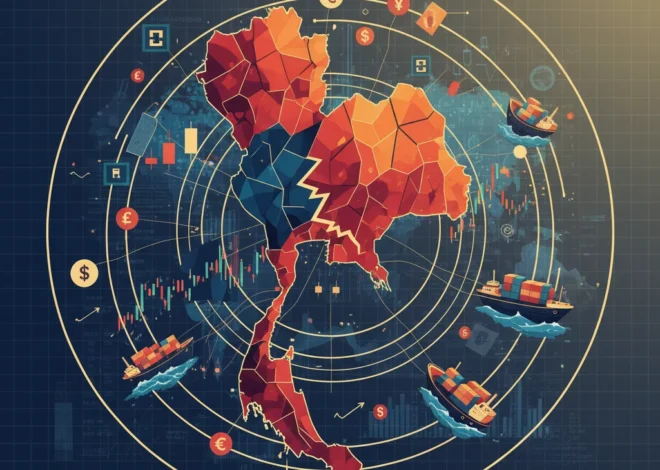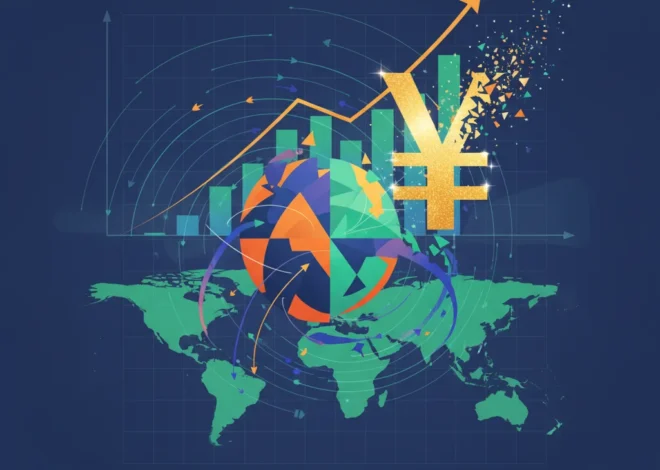
Beyond the Headlines: Why Record Carbon Emissions Are a Critical Red Flag for the Global Economy
In the relentless 24/7 cycle of market news and economic forecasts, it’s easy to overlook the slow-burn crises that will ultimately define our financial future. A recent report from the International Energy Agency (IEA), highlighted by the Financial Times, delivered one such critical data point: global energy-related carbon dioxide emissions surged to a new record in 2023. While the number itself is alarming, its implications stretch far beyond environmental science, striking at the very heart of the global economy, modern finance, and long-term investing strategies.
For investors, business leaders, and finance professionals, this isn’t just another headline. It’s a fundamental risk factor that is reshaping markets, redefining asset values, and creating both unprecedented challenges and unique opportunities. The era of treating climate data as a separate, non-financial concern is over. Welcome to the new reality, where carbon emissions are as critical to a portfolio’s health as interest rates and inflation.
The Uncomfortable Numbers: A Record We Didn’t Want
Let’s first break down the headline figures. According to the IEA’s latest analysis, global energy-related CO2 emissions increased by 1.1% in 2023, reaching a staggering 37.4 billion tonnes. While the growth of clean energy—solar, wind, and electric vehicles—prevented a far worse outcome, the upward trajectory continues, pushing the world further away from its climate goals.
A key driver behind this increase was an unexpected shortfall in hydropower due to severe global droughts—a stark reminder of how physical climate risks can directly impact our energy systems. To compensate for the lack of hydro, nations turned to fossil fuels, leading to an increase of over 170 million tonnes of CO2 emissions from that sector alone.
The geographic split in these numbers tells a complex story about the global economy and its ongoing energy transition. The data below illustrates this divergence:
| Region/Factor | 2023 Emissions Trend | Key Drivers & Context |
|---|---|---|
| Advanced Economies (e.g., US, EU) | Record Decline | Structural shift to renewables, coal phase-out, milder weather, and weaker industrial output. Emissions fell to a 50-year low. |
| China | Significant Increase (approx. 565mn tonnes) | Post-Covid economic rebound and weather-related challenges impacting hydropower output. China also led the world in adding new renewable capacity. |
| India | Increase | Strong GDP growth and below-average rainfall which increased demand for fossil fuel power generation. |
| Global Clean Energy | Rapid Growth | Solar PV, wind, and EV sales avoided an additional 550 million tonnes of CO2 emissions. Without this, the total increase would have been three times larger. |
This data paints a picture not of universal failure, but of a deeply fragmented and complex transition. While developed nations are beginning to decouple economic activity from emissions, emerging economies are still grappling with the challenge of powering their growth. This divergence has profound implications for international relations, supply chains, and the global stock market.
China's Singles Day Kicks Off Early: A Strategic Lifeline for a Faltering Economy?
From Emissions to Economics: The Financial Fallout
How do tonnes of carbon translate into dollars and cents? The connection is becoming increasingly direct, impacting everything from corporate valuations to national economics. The financial risks stemming from climate change are broadly categorized into two types:
- Physical Risks: These are the direct costs of climate change. The droughts that crippled hydropower in 2023 are a perfect example. Other examples include supply chain disruptions from extreme weather, damage to physical assets from floods or wildfires, and increased insurance premiums. For any company with a physical footprint, these risks are now a material factor in their operational stability and, by extension, their stock price.
- Transition Risks: These are the financial risks associated with the transition to a low-carbon economy. This includes sudden policy changes (like a carbon tax), technological disruption that makes old business models obsolete (e.g., internal combustion engines vs. EVs), and shifts in consumer and investor sentiment. A company heavily invested in fossil fuels faces immense transition risk, as its assets could become “stranded” or worthless in a world that no longer values them.
This dual threat is forcing a fundamental re-evaluation of risk across the entire investing landscape. Central banks are now conducting climate stress tests on the banking system to understand its exposure, and credit rating agencies are beginning to incorporate climate risk into their assessments of corporate and sovereign debt.
The New Frontier: Financial Technology and the Green Transition
Navigating this complex new world requires better data, more transparency, and new financial instruments. This is where financial technology (fintech) and innovative market mechanisms are playing a crucial role.
The world of ESG (Environmental, Social, and Governance) investing has exploded, but it has been plagued by inconsistent data and “greenwashing.” Fintech platforms are rising to the challenge, using AI and alternative data to provide investors with more accurate, real-time assessments of a company’s true environmental impact. This allows for more sophisticated trading strategies that can properly price in climate risk.
Furthermore, technologies like blockchain are being explored to create more transparent and trustworthy markets for carbon credits. By creating an immutable ledger of credit generation and retirement, blockchain can help solve the double-counting problem and bring much-needed integrity to this vital market. This isn’t just a technological curiosity; it’s a potential cornerstone for building a functional global carbon market, a multi-trillion dollar opportunity that will reshape commodity trading as we know it.
The banking sector is also innovating, albeit under regulatory pressure. The issuance of green bonds to fund sustainable projects is now a mainstream activity, creating new asset classes for investors looking to align their portfolios with the energy transition. This intersection of finance and sustainability is no longer a niche—it’s the future.
Actionable Takeaways for Investors and Business Leaders
The 2023 emissions report is not a historical document; it is a forward-looking indicator of risk and opportunity. Ignoring its implications is a dereliction of fiduciary duty. Here’s what you should be considering:
- Integrate Climate Risk Analysis: Move beyond basic ESG scores. Conduct scenario analysis to understand how your portfolio or business would perform under different climate and policy futures.
- Identify Transition Leaders: Look for companies that are not just reducing their own emissions but are also providing the solutions for others to do so. These are the long-term winners in the green economy.
- Demand Transparency: As an investor or board member, push for better corporate disclosure on climate risks and strategies. The more transparent the market, the more efficiently it can price risk.
- Watch the Innovators: Keep a close eye on the fintech and financial technology space. The tools being built today will become the standard for risk management and investment analysis tomorrow.
The path to a low-carbon future is not a straight line. The latest data is a sobering reminder that progress is fragile and the economic forces of the old energy system are still powerful. But for the prepared investor and the forward-thinking business leader, this volatility spells opportunity. The greatest wealth transfer in a generation is underway as capital moves from the carbon-intensive past to the sustainable future. The question is, on which side of that transfer will you be?


